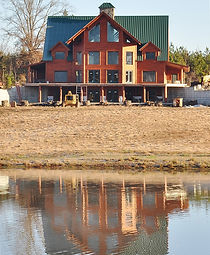CI Forest Products -
Northern White Cedar vs. Pine
Northern White Cedar vs. Pine -
These facts were assigned by the UNITED STATES FOREST PRODUCTS LABORATORY.


Some Latest projects
products supplied by CI Forest Products
NORTHERN WHITE CEDAR
Still #1 for $$ to Quality, Longevity, and Care.
Northern White Cedar is one of nature’s miracles, possessing natural beauty and superior insulating qualities. Northern White Cedar is naturally insect and rot resistant and not prone to splintering.
Excellent for indoor and outdoor applications, with no added chemicals, it is non-toxic and safe to handle.
-
Highest R-Value of all wood species, almost 30% higher than pine.
-
Resistant to insects due to natural wood resins.
-
No settling, warping or checking problems, the lowest shrinkage of all wood species.
-
Chemical-free for a healthy home and no need for the expense of lifelong chemical maintenance.
-
Cedar’s closed cell structure means it’s extremely decay-resistant. Cedar does not absorb water allowing mold or fungus to grow inside logs.
-
Northern White Cedar is non-allergenic.
-
Slow tree growth results in a tight growth ring meaning fewer knots and a beautiful grain surface.

More Northern White Cedar Facts
Updated January 2015
NORTHERN WHITE CEDAR:
-
Known for its excellent insulating quality.
-
It is the most decay-resistant wood.
-
Performs well in even the harshest climate.
-
It requires little or no maintenance.

History and Pine
Updated January 2015
PINE has a special place in the history of Americana heritage and culture.
Pine Facts Compared to Cedar:
-
Lower R-values
-
Excessive settling, warping and checking due to a high rate of shrinkage.
-
Chemically treated logs require a lifelong, expensive maintenance program.
-
Pine’s open-cell structure allows water absorption resulting in mold and fungus growth inside logs causing decay.
-
Fast tree growth causes the low grain and excessively large knots.
